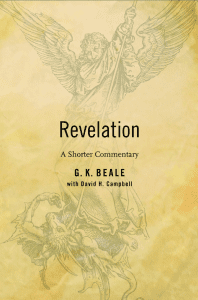The Book of Revelation needs to be interpreted — and there are five major forms of interpreting Revelation. Which is your interpretive model? Today we discuss these models, and in our next post (next Monday) sketch Gorman’s criticisms of the Left Behind (and similar) approaches.
 Michael Gorman, Reading Revelation Responsibly: Uncivil Worship and Witness: Following the Lamb into the New Creation breaks down the methods of interpreting Revelation into five basic methods.
Michael Gorman, Reading Revelation Responsibly: Uncivil Worship and Witness: Following the Lamb into the New Creation breaks down the methods of interpreting Revelation into five basic methods.
First, the Predictive approach. The book is about the future — our future because the big vision hasn’t happened yet. This view is old and the most common. There has been lots of “decoding” — seeing images, etc as being fulfilled in specific events. They’ve all been wrong. One view sees Church history, while another — the dispensationalist approach — sees it concerned with the “End Times.” Dispensationalism is more or less a decoding approach. Locusts could be helicopters. (More later.)
Second, the Preterist approach. Revelation is about its immediate time — hence the 1st Century, Rome, etc.. The “decoding” is about the Roman Empire. David Aune is an excellent example.
The next three are essentially timeless:
Third, the Poetic approach. Revelation is full of mythical and poetic language. That language conveys great truths about God, evil, history … (like Star Wars, Homer). This view is sometimes called Idealist. The view often emerges as a reaction to historicist or futurist readings. Origen, Augustine, Eugene Peterson (how’s that for a leap in time?). the original context isn’t solely the determinative factor.
Fourth, the Political approach. Revelation is a protest against empire and comfort for the people of God. A major interest is the critique of injustice.
Fifth, the Pastoral-Prophetic approach. Revelation is pastoral in that it calls people to faithfulness and discernment. Charles Talbert is a good example and so is Rob Wall.
Gorman’s approach combines the poetic and the political — theopoetics and theopolitics.











